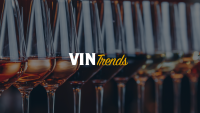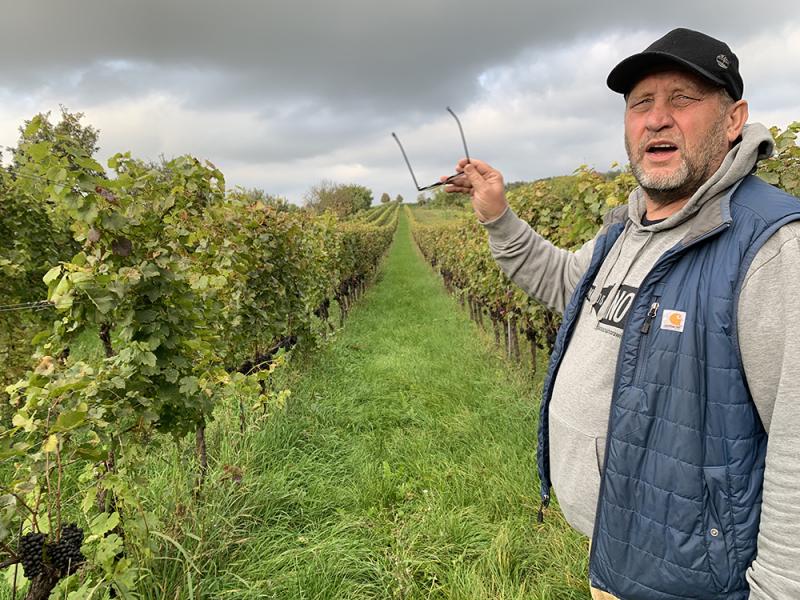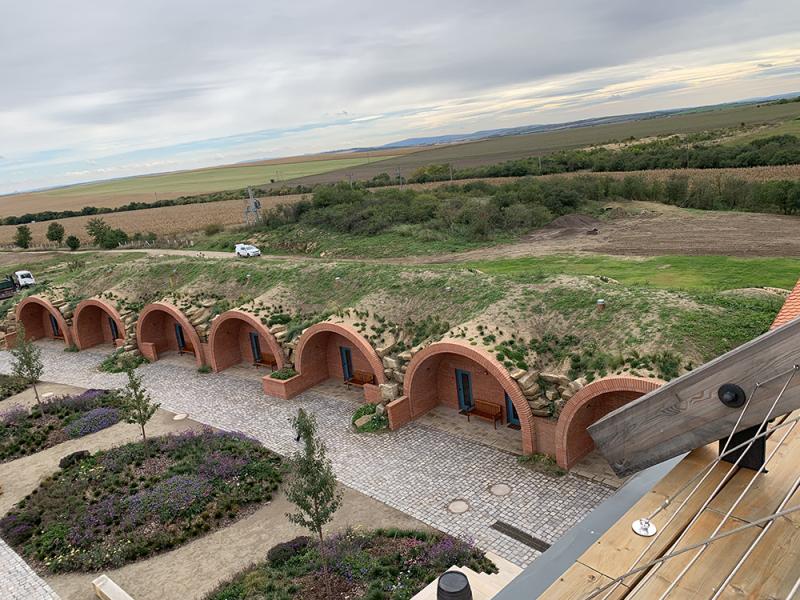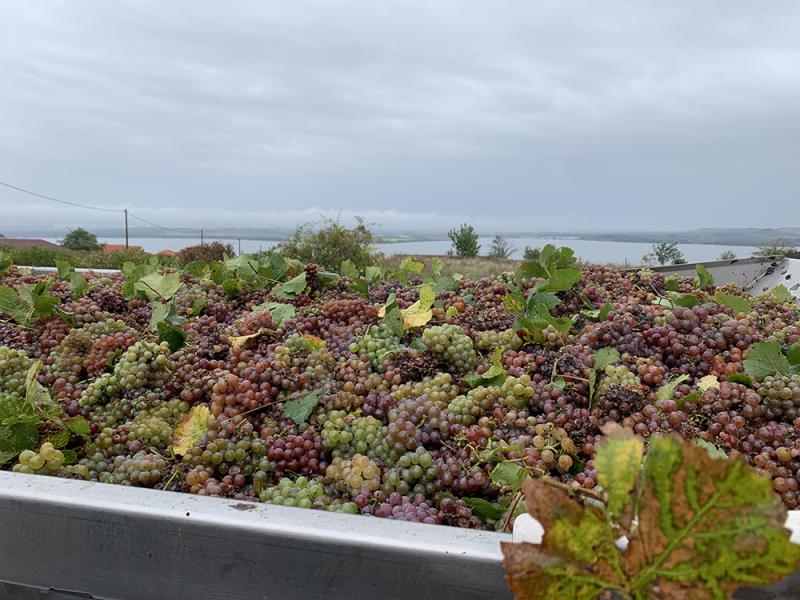
Be sure to read the last VinTrends column on volcanic wines.
The making and drinking of spirits and legendary beers has lost little traction in the Czech Republic, but grapes and wine have been produced here dating to the 9th century. Today, its circa 1995 wine law, which established Protected Geographical Indications and Protected Designation of Origins, is applied to a country vastly dominated by small, family growers.
Like its more renowned central European neighbors of Austria and Hungary, the ongoing impacts of climate change have shifted its cool, continental climate to allow for a greater ripening of grapes, such as the top-planted white of Veltlínské Zelené and red of Frankovka, better known to lovers of Austrian vinó as Grüner Veltliner and Blaufränkisch. Three quarters of all grapes are white with other commonly found ones: Muller-Thürgau, Riesling, Welschriesling, Pinot Gris, and the indigenous Pálava. These are fleshed out by other reds: St. Laurent, Zweigelt, and Pinot Noir.
Ninety-five percent of Czech wine is produced in Moravia’s four sub-districts south of the city of Brno—Mikulov, Znojemsko, Velké Pavlovice, Slovácko—with the remaining 5% hailing from the country’s more western reaches of Bohemia.
While no verifiable statistics are available, as compared to any other wine-producing country, the amount of Czech wine sold in the U.S. (and UK) under the natural umbrella is unusually high.
Biodynamic growers Ondřej Dubas and Marek Vybíral of Krásná hora said the rainy late September 2022 harvest was similar to 2010 and 2014. Marek said that the harvest had “the grapes still perfect and hanging on the vine,” when I visited him. They work with four Dijon clones of Pinot Noir on three hectares, buying more from neighbors for many sparkling bottlings, and combat excessive rain by planting a wealth of cover crops in the hope that botrytis and excessive nitrogen disinhibit production in the low-trained, low-yielding vines. Their still Riesling, sparkling pink, and plethora of still Pinot Noirs found my palate leaping from cloud to cloud.

At the stylish Thaya winery, its name referencing a nearby river, third generation winegrower Jakub Smrečka oversees 105 hectares planted to 18 varieties on behalf of the Travniček family. Thaya’s contemporary efforts extend to a restaurant with justifiable Michelin ambitions and a bevy of guest accommodations resembling half-covered, landscaped Quonset huts. Only 10% of its 10,000 cases is exported, a sizable portion through California’s VeroVino.

Former Shakespearean actor Marianna Caldwell, general manager of Santa Monica’s Cassia restaurant, commands a globe-spanning list. With Riesling accounting for 30% of her 200+ wines, she says, “Thaya’s tastes fantastic with our spicier menu, its growing practices fit into my vision, and being more affordable than many of similar quality, it sells well.”
At Santa Barbara’s 700-square-foot Revolver Pizza, Owner Nicholas Bodden affirmed that for him, wine is "as important as pizza, both for customer expectations and our profit." Introduced to Thaya by VeroVino’s Owner Sheila Donohue, Bodden claims that “during their Revolver run, Thaya’s Muscat, Rosé, and Muller-Thürgau were selling better by bottle and glass than any of the other 20 wines we list."
It was at Thaya’s neighboring biodynamic Špalek winery that I encountered wine-loving American Professor Henry Hanson of Czech Technical University, who’s taught in Prague since 1999 (and at North Carolina State University). "No longer ensconced in historical precedent and committed to a sophisticated wine experience, Thaya and nearby Lahofer wineries are paradigm shifts for the perception of Czech wines," he says.
Jenny & François Selections is likely the largest importer of Czech wines into the U.S. with Milan Nestarec selling as much as the remaining eight Moravian wines of Jenny Lefcourt's and partner Phil Sareil's inventory.
Chicago's Easy Does It Bar Buyer Zack Eastman likes, “Nestarec's appeal through its label and multidimensional wines, especially the pink Pet Nat, which has a lot of verve.” He is motivated by personal interest along with the visibility Nestarec has with the younger, natural wine-loving set.
Maydan DC’s Drew Hairston, a sommelier who happened upon a bevy of unusual wines left from a predecessor during the pandemic that piqued his interest, finds that, “the consistent availability of Nestarec wines is critical to our customers' building and maintaining interest.”
Receiving her first pallet of wine in June 2021, Massachusetts resident Veronika Wills spent her first 23 years learning the ropes at her family's Spěvák wine estate, its 13 hectares of Slovácko vineyards creating seven still wines she now imports for sale in six U.S. states. As a solo operator of her Wills International, she furtively scours the U.S. for sales hoping to ply her family’s wines in destination outlets like Maydan while collaborating with the Czech Embassy in D.C. to further her mission.

In an effort to join their Moravian neighbors exporting to the U.S., Stani & Lukáš Rudolfský of Bohemia’s Vinné Sklepy showed their stuff at an October natural drinks fair near my Hudson Valley home. “We received enthusiastic responses from many consumers and three importers,” they said, gifting me a bottle of their Karlov PetNat Pinot gris to enjoy a second time.
The following were enjoyed in various contexts and levels and are hyperlinked to take you to their importer’s sites:
Martin Vajčner Veltlinske Zelene Kravi Hora
Since 1986, David Furer has served in the on- and off-premise trenches in his native U.S. and former adoptive homes of Great Britain and Germany; directed & hosted international wine business conferences in Europe, Asia, and online concerned with its future and climate change; and contributed to wines & spirits media outlets in the U.S. and Great Britain. He also provides marketing & communications expertise to organizations throughout the world from his New York home while somehow finding time to host the consumer-facing podcast Drinking on the Edge. You can reach him at [email protected].
Plan to Attend or Participate in the 2024 Vibe Conference, February 26 – February 28, 2024
To learn more about the latest trends, issues and hot topics, and to experience and taste the best products within the on-premise beverage community, plan to attend the Vibe Conference at Town & Country in San Diego, California. Visit VibeConference.com.
Contact us now to secure your program for 2024:
Donna Bruns, Sales & Sponsorships, (for companies A-L), Email: [email protected] Phone: 936-522-6932
Fadi Alsayegh, Sales & Sponsorships, (for companies M-Z), Email: [email protected] Phone: 440-454-0239
Connect and follow Questex’s Vibe Conference and community at Facebook and LinkedIn.
